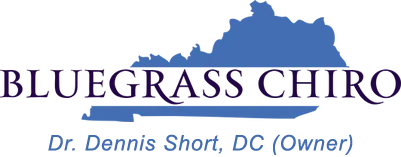Back pain may have many causes, but in some cases, the source of pain and disability is a disc disorder. The loss of strength and pliability in this cartilage-like structure can result in painful and debilitating symptoms. A chiropractor can often help with this problem. Here are the basics on disc disorders, courtesy of Bluegrass Chiro.
What Is a Spinal Disc?
Between each bone (vertebra) of the spine, you will find a rounded, thick piece of cartilage that is flat on the top and bottom. This disc is attached to the bones and acts as a shock absorber. Increasing age, degenerative diseases, injury, and repetitive motions can all cause the disc to become less pliant or even break down.
About Disc Disorders
Many people have heard the term herniated disc, bulging disc, or slipped disc. All of these refer to breakdown in one or more discs. Herniated disc symptoms may occur anywhere in the spine, but a common location is the lower back. The next most common is the neck, and rarely, the thoracic region.
Herniated Disc Symptoms
Pain is the most common symptom of a herniated disc. The pain may be localized to a specific area or radiate down an arm or leg. If the disc is pressing on a nerve, it may cause numbness, tingling, or weakness in the affected extremity. These symptoms help identify the location of the problem.
Disc Pain or Nerve Root Pain?
Degeneration in the disc itself is more likely to cause referred pain. As we age, discs dry out and lose flexibility. This means less cushioning between the vertebrae and can result in back or neck pain. If the disc ruptures and protrudes into the spinal canal, it can cause pressure on one of the nerves that exits the spinal cord, resulting in pain, "pins and needles," or weakness.
The Chiropractor and Disc Disorders
When back pain is the result of misalignment or degeneration, chiropractic treatment is often effective in relieving pain. Among the possible therapies are:
- Spinal manipulation to restore proper alignment; this may be done by hand or with an instrument.
- Flexion-distraction to widen the spinal canal and reduce pressure on the nerve.
- Trigger point therapy or therapeutic massage to relieve muscle tension.
- Electrical stimulation or ultrasound to reduce inflammation.
- Postural analysis and correction as well as therapeutic exercises to strengthen and stretch muscles, and promote proper spine alignment.
Whether you call it a herniated disc or bulging disc, if you have herniated disc symptoms a chiropractor can often help relieve your pain and improve your overall health. At Bluegrass Chiro, we have 12 locations in Kentucky area to serve you. Please contact us today via email or call the nearest office.
